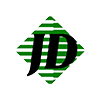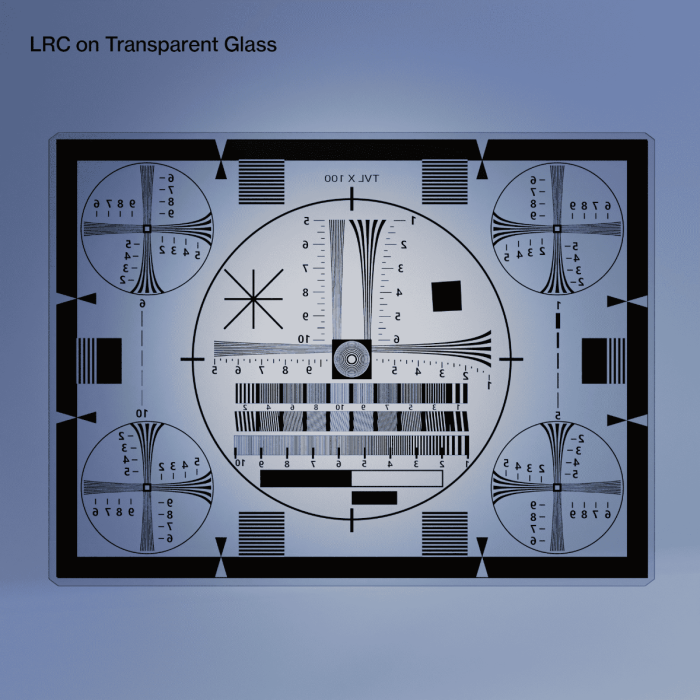SL15 IEEE 208 1995 video resolution chart
IEEE 208 1995 Standard
Full Field Resolution and Calibration
This ISO 12233 Chart is based on the year 1995 version, and has been created for measuring the resolution of cameras. The chart is applicable to the measurement of both monochrome and colour cameras which output digital data.
The primary application is for users and manufacturers to quantify the limit where fine detail contained in the original image is no longer reproduced by the camera system. The techniques described may also be used for laboratory measurements and for proof-of-performance specifications for a camera, given that you can obtain frequency response, characteristic performance of the lens, camera and display device used.
Both the chart size, and also the Active Image area is 200mm x 152mm (approx 8"x6")
MATERIAL
- Soda Lime Glass: Optical quality glass, with a chrome pattern etched into the surface. To be viewed right reading through the glass side to the back of the chrome face.
PATTERN DESCRIPTION
- Central double frequency concentric circles for focusing.
- 100-600 LP and 500-2000 LP wedge shapes for measuring optical resolution in the horizontal, vertical and corners.
- 100-1000 LP square wave sweeps for measuring vertical and horizontal limiting resolution
- 5deg slanted edge bars and squares for measuring SFR
- Multiple degree slanted edge "star pattern" for measuring SFR
- 100-1000 LP short black lines for pulse responses in the horizontal and vertical
CHROME SPECIFICATION
On transparent glass charts , the pattern is chrome with a low reflective oxide coating (11% reflectivity at 436nm wavelengths). They are made at high presicion, using a photolithographic method, ensuring the very best quality. The Optical Density of the chrome is >2.8 in the visible bandwidth, and the chrome is coated to approx 0.1um thick.
On the opal glass, the pattern is 6% reflectivity at 650nmwavelengths, and the optical desnity is higher at > 4 in the visible bandwidth.
MATERIAL SPECIFICATION
Soda Lime Glass is the most common substrate used for optical targets, due to its good quality/price ratio. The glass is optically good, very flat and has no imperfections. If used in a photo-lithographic process, glass can be used with a very wide variety of light sources from 350nm upwards, with an excellent transparency. Soda Lime glass has a thermal co-efficient expansion of 93 (10-7) which is approximately 10 ppm (parts per million) , and a transmittance value of 88% at 375-450nm, with a glass flatness class of 5um for the smaller plates and 10um for the larger plates.
FREQUENTLY ASKED QUESTIONS
Q: The pattern doesnt represent what i need - can we alter it as a special design?
A: Yes ....The patterns here are standard products, but we can certainly transfer almost any design to the slide (Note the price will change accordingly)
Q: How long from order to dispatch?
A: Typically we have these products in stock on the shelf - however, it may take upto 3 days before they are dispatched. The very largest glass based products are made to order and will take 7-10 days before shipment. If you need the product more urgently, please contact us direct and we will do our best !
Q: Can you send me a scaled picture showing the detail in higher resolution?
A: Certainly, we have higher resolution graphics that we can email you. Please contact us via the Live Support or by Email.
Q: Can I have different materials?
A: Yes. Our standard high resolution products are Low Reflective Chrome on Soda Lime glass or Polyester Photo Paper - but we can offer different base material (transparent film, painted film ettc) There may be minimum order quantities for most of these special materials.






